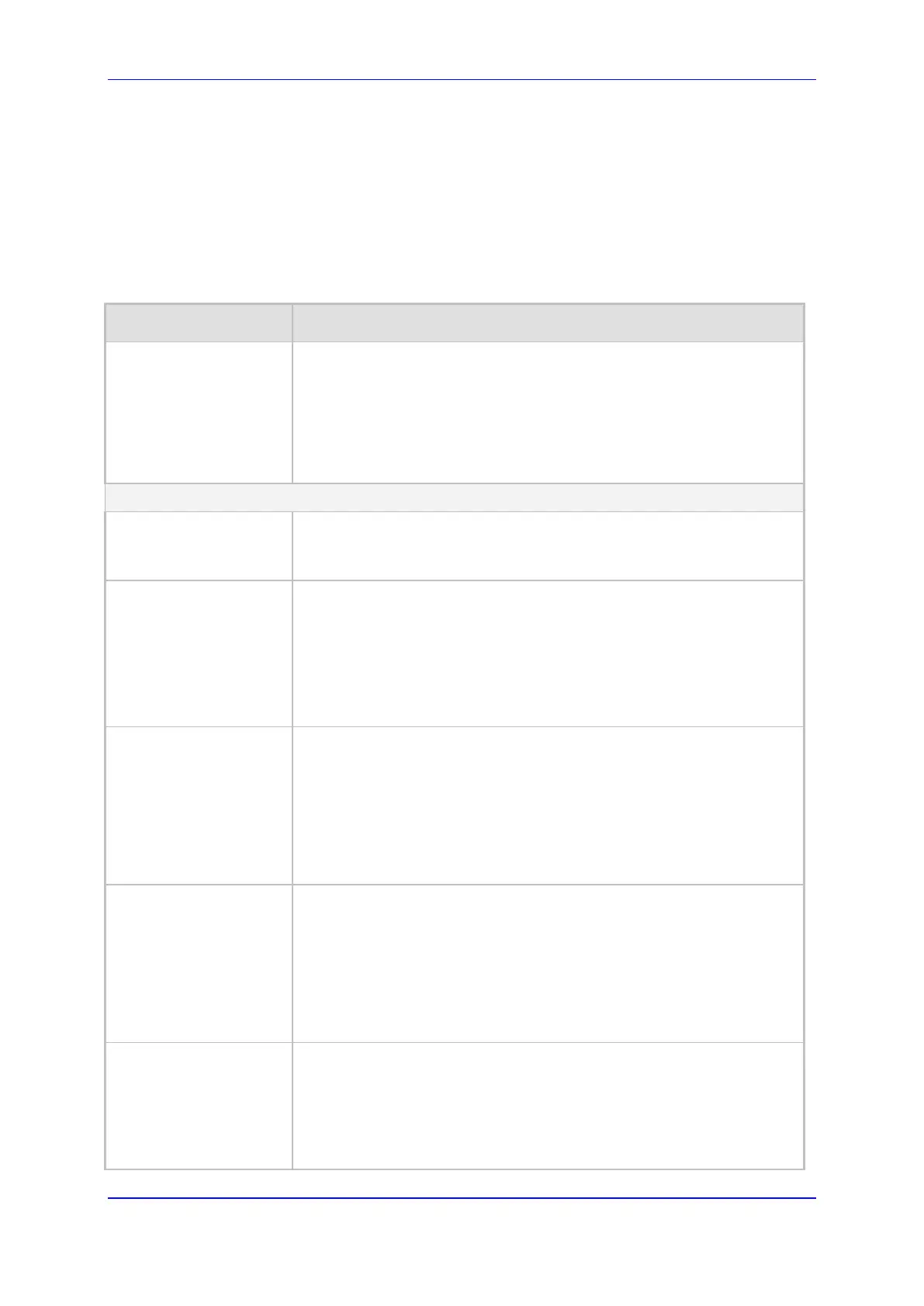Version 6.6 319 Mediant 2000
User's Manual 24. Routing
• Rule 4: If the incoming IP call has IP address 10.13.64.5 in the INVITE's Contact
header, the call is identified as an IP-to-IP call and assigned to Source IP Group
4. This call is routed according to the outbound IP routing rules for this Source IP
Group configured in the Outbound IP Routing Table.
2. Configure the routing rule, as required. For a description of the parameters, see the
table below.
3. Click Submit to apply your changes.
IP-to-Tel or Inbound IP Routing Table Description
Parameter Description
IP to Tel Routing Mode
[RouteModeIP2Tel]
Determines whether to route the incoming IP call before or after
manipulation of destination number, configured in 'Configuring
Source/Destination Number Manipulation' on page 287.
[0] Route calls before manipulation = (Default) Incoming IP calls are
routed before number manipulation.
[1] Route calls after manipulation = Incoming IP calls are routed after
number manipulation.
Matching Characteristics
Web: Dest. Host Prefix
[DestPrefix]
Defines the Request-URI host name prefix of the incoming SIP INVITE
message. If this routing rule is not required, leave the field empty.
Note: The asterisk (*) wildcard can be used to depict any prefix.
Web: Source Host Prefix
[SrcHostPrefix]
Defines the From URI host name prefix of the incoming SIP INVITE
message. If this routing rule is not required, leave the field empty.
Notes:
The asterisk (*) wildcard can be used to depict any prefix.
If the P-Asserted-Identity header is present in the incoming INVITE
message, then the value of this parameter is compared to the P-
Asserted-Identity URI host name (and not the From header).
Web: Dest. Phone Prefix
[DestHostPrefix]
Defines the prefix or suffix of the called (destined) telephone number.
You can use special notations for denoting the prefix. For example,
[100-199](100,101,105) denotes a number that starts with 100 to 199
and ends with 100, 101 or 105. To denote any prefix, use the asterisk (*)
symbol or to denote calls without a called number, use the $ sign. For a
description of available notations, see 'Dialing Plan Notation for Routing
and Manipulation Tables' on page 501.
The prefix can include up to 49 digits.
Web: Source Phone
Prefix
[SourcePrefix]
Defines the prefix or suffix of the calling (source) telephone number. You
can use special notations for denoting the prefix. For example, [100-
199](100,101,105) denotes a number that starts with 100 to 199 and
ends with 100, 101 or 105. To denote any prefix, use the asterisk (*)
symbol or to denote calls without a calling number, use the $ sign. For a
description of available notations, see 'Dialing Plan Notation for Routing
and Manipulation Tables' on page
501.
The prefix can include up to 49 digits.
Web: Source IP Address
[SourceAddress]
Defines the source IP address of the incoming IP call that can be used
for routing decisions.
The IP address can be configured in dotted-decimal notation (e.g.,
10.8.8.5) or as an FQDN. If the address is an FQDN, DNS resolution is
done according to the DNSQueryType parameter.
Notes:

